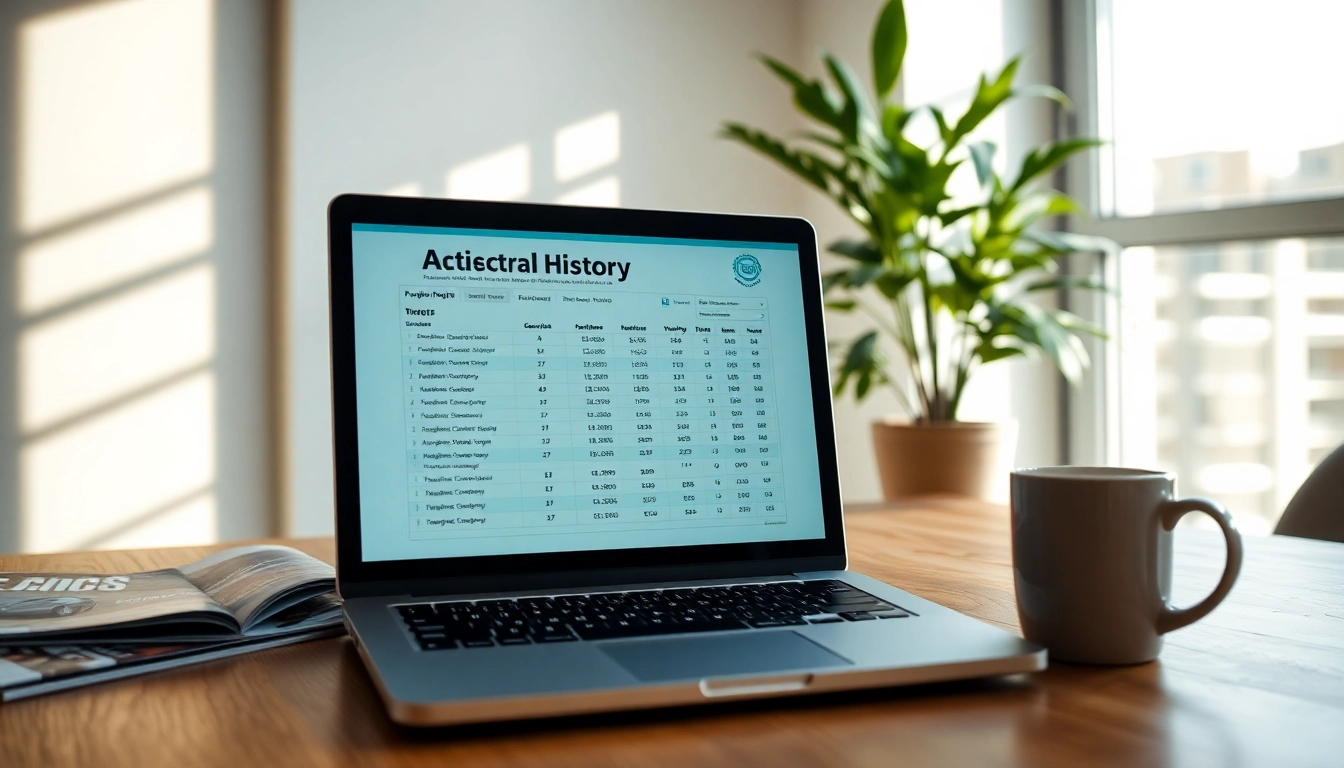Understanding Part Exchange
What is Part Exchange?
Part exchange, in its most basic form, refers to a transaction where an individual offers an existing item—most commonly a vehicle—as part of the payment for a new purchase. This method is particularly common in the automotive industry, where a buyer can use the value of their old car to reduce the cost of a new one. Essentially, part exchange acts as a convenient means of making upgrades without the hassle of selling the old item through other channels.
The concept can extend beyond cars to various consumer goods, but it is most prevalent in vehicle sales. When a dealership agrees to a part exchange, they assess the condition, age, and market value of the current vehicle before coming up with a fair trade-in value that will offset the price of the new vehicle being purchased.
The Benefits of Part Exchange
The advantages of part exchange are manifold, making it an appealing option for many buyers. Here are some key benefits:
- Simplified Process: The part exchange process tends to be quicker and less cumbersome than selling a vehicle privately. This means less time spent on advertisements, showings, and negotiations.
- Immediate Trade-In Value: Buyers can receive an immediate valuation for their vehicle, which provides a clear perspective on the overall cost of the new vehicle purchase.
- Convenience: Transactions can often be completed in one visit to the dealership, requiring minimal effort compared to other selling methods.
- Negotiation Leverage: A vehicle’s trade-in value can sometimes be used as leverage during negotiations for the new vehicle—meaning buyers may secure a better deal.
How Part Exchange Differs from Traditional Sales
While traditional sales generally involve sellers finding buyers for their items independently, part exchange offers a more integrated approach within the retail environment. In traditional sales, sellers often face challenges such as:
- Market Fluctuations: The seller may not have control over market conditions that could affect the pricing of their vehicle.
- Time Consumption: Finding the right buyer takes time, and many sellers might have to repeatedly show the vehicle to interested parties.
- Uncertain Valuations: Sellers might struggle to ascertain the fair market value of their vehicle unless they conduct extensive research.
In contrast, part exchange provides pre-established valuations based on dealership assessments, streamlining the process considerably. Dealers typically have access to valuation guides and market analytics that empower them to offer fair prices for trade-ins.
How to Prepare for a Part Exchange
Assessing Your Car’s Value
Engaging in a part exchange requires a good understanding of your own vehicle’s worth. Here are some methods for assessing your car:
- Online Valuation Tools: Websites that offer free valuation tools can give you an estimate of your vehicle’s worth based on make, model, age, condition, and mileage.
- Consulting Guides: Publications such as the Kelley Blue Book or the NADA Guides provide insights into the value of cars in the current market.
- Have a Professional Appraisal: For more precise evaluations, consider getting a professional appraisal from a local car dealership or expert.
Finding the Right Dealership
Not all dealerships offer the same benefits or trade-in valuations. Therefore, when searching for a dealership, consider the following:
- Reputation: A dealership with positive reviews and strong local credibility is more likely to provide fair valuations and better customer service.
- Special Deals: Some dealerships may have specific promotions aimed at buyers willing to part exchange, leading to better deal opportunities.
- Items in Stock: Ensure that the dealership has a range of vehicles that you are interested in purchasing.
Gathering Necessary Documentation
Before proceeding with the part exchange, gather the following documentation:
- Vehicle Title: Ensure you have the original title document, confirming you are the legal owner.
- Registration Documents: Provide any current registration papers and proof of insurance.
- Service Records: If available, service history helps demonstrate regular maintenance and can enhance the vehicle’s value.
- Identification: Bring a driver’s license or other valid identification to facilitate the transaction.
The Part Exchange Process
Step-by-Step Guide to Part Exchanging Your Car
Understanding the part exchange process allows for better preparedness and can ease anxiety during negotiations. Here’s a breakdown of the typical steps involved:
- Initial Assessment: Begin by assessing your car’s value, as outlined earlier.
- Research Dealerships: Identify and visit dealerships that appeal to you and have potential inventory you’re interested in.
- Obtain Trade-In Appraisal: Engage with the dealership to get an official trade-in value for your vehicle.
- Negotiate the New Purchase: Utilize the trade-in value during negotiation discussions for the new vehicle’s price.
- Complete the Transaction: Once both the new and trade-in pricing are agreed upon, complete the purchase paperwork.
Negotiating Your Trade-In Value
Negotiating the trade-in value is an essential component of the part exchange process. Here are some key tips for successful negotiation:
- Know Your Value: Arrive equipped with knowledge regarding the fair market value of your old car.
- Be Confident: Maintain a confident demeanor when presenting your case. A calm and collected buyer often receives better attention during negotiations.
- Discuss Necessary Repairs: If there are any minor repair needs on your vehicle, be honest about them. This transparency can encourage goodwill in negotiations.
Closing the Deal on Your New Purchase
After successful negotiations regarding your trade-in value and the new vehicle price, review all documents thoroughly before signing. Establishing clear terms and understanding the final cost breakdown is vital. Make sure to carefully read through any financing agreements if applicable.
Common Challenges in Part Exchange
Dealing with Low Trade-In Offers
One of the most common challenges faced by individuals looking to part exchange their vehicles is receiving an unsatisfactory trade-in offer. Several factors contribute to this situation:
- Dealer’s Perspective: Dealers aim to maximize their profit margins, which can lead to lower offers.
- Market Demand: Even if a vehicle is in good condition, market demand can dictate lower trade-in valuations.
To combat low offers, sellers can present documented proof of their vehicle’s worth, condition, and service history to justify a higher valuation.
Understanding Valuation Risks
Valuation risks are inherent in any part exchange transaction. Buyers should be aware that fluctuations in market conditions and unexpected depreciation can impact their vehicle’s trade-in value. Staying informed about industry trends and recent sales can provide insights that help mitigate these risks.
Managing Time Constraints
Time constraints are another common challenge. Many buyers might rush their decisions due to urgency, leading to potential oversights. To manage this effectively:
- Planning: Allocate ample time for vehicle assessment, research, and comparisons, as rushed decisions can result in regret.
- Utilizing Online Resources: Engage in online research to pre-qualify dealerships and car valuations—this can significantly speed up the process.
Tips for a Successful Part Exchange Experience
How to Maximize Your Offer
Maximizing your trade-in offer can make a significant difference in the value of your part exchange. Here are some strategic tips:
- Enhance Curb Appeal: Clean your vehicle thoroughly and consider minor repairs. The better the presentation, the higher the perceived value.
- Time Your Exchange: Awareness of market trends can help identify the optimal time to exchange your vehicle for better offers.
Timing Your Exchange Strategically
Timing is crucial in maximizing value. Seasonal trends affect used car demand; for example, trade-ins often garner better offers during tax return seasons when buyers have extra cash. Understanding the best seasons to trade or buy can bolster your negotiating power.
Building a Positive Relationship with Dealers
Finally, building rapport and a strong relationship with dealers can lead to better trade-in offers. Developing a relationship paves the way for open dialogue and trust, often resulting in favorable outcomes for both parties during negotiations.


